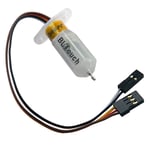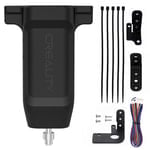Anyone working with a 3D printer knows the struggle of achieving a level bed. A level bed helps ensure a high-quality first layer, which affects the success of the rest of a 3D print.
On budget printers like the Creality Ender 3, Pro, and V2, the most common way to level a bed is manual leveling, which involves the user adjusting the print bed’s position at different points to make them the same distance below the nozzle. Automatic bed leveling (ABL) is another method, using a sensor to level the bed autonomously. Since ABL is more expensive than manual leveling, it doesn’t often come stock on hobbyist 3D printers.
However, as many users want this attribute on their printer for both convenience and precision, ABL is a popular upgrade for budget 3D printers like the Ender 3s. The upgrade involves attaching a leveling sensor to the printhead so the system can measure the distance between the nozzle and the build plate at different points.
When it comes to leveling sensors, there are many options available that vary in brand, underlying technology, compatibility (printer and firmware), accuracy, and other factors.
In this article, we’ll go over some of the best ABL sensors that you can use to enable automatic bed leveling on whichever Ender 3 you have. For each sensor, we’ll go over how it works, interesting features about the device, and how difficult it is to install.
What You'll Need
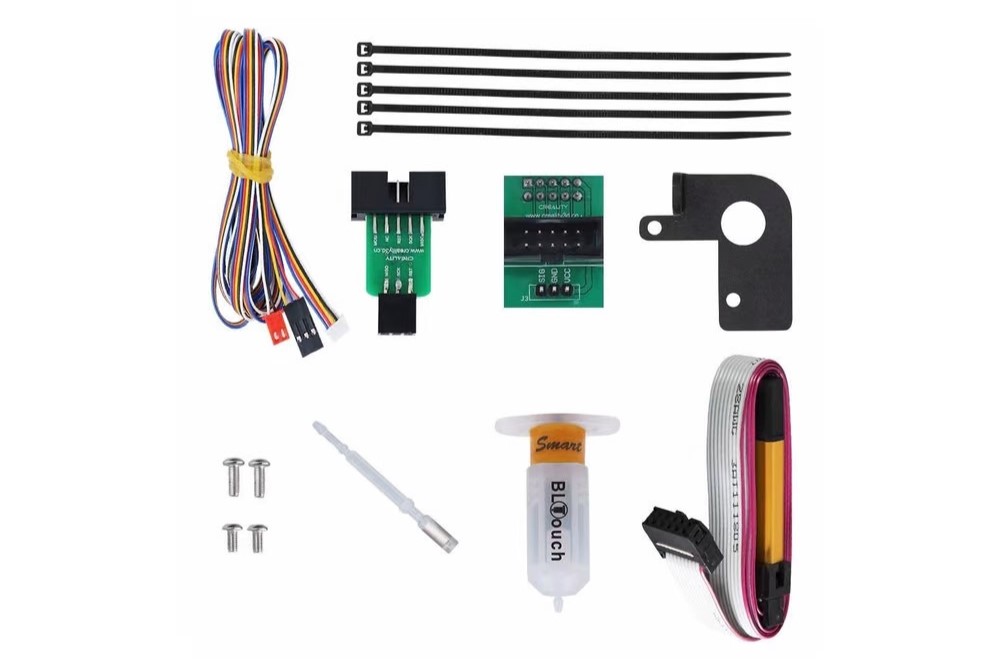
Before we get to the list, let’s look at what you’re in for when you buy an auto-leveling upgrade kit for your Ender 3. A typical auto-bed level kit comprises the following main parts:
- Sensor: This is the part that determines that the build platform is at the optimum height at multiple points.
- Mounting bracket: This is used to attach the sensor to the printer (usually on the printhead).
- Firmware update: In order to perform the auto-leveling function, your printer will need the necessary “knowledge”. This is typically achieved through in-system programming (ISP) or a port on the controller board.
With these requirements in mind, let’s take a look at a few of the most popular options to add auto-bed leveling on your Ender 3.
BLTouch
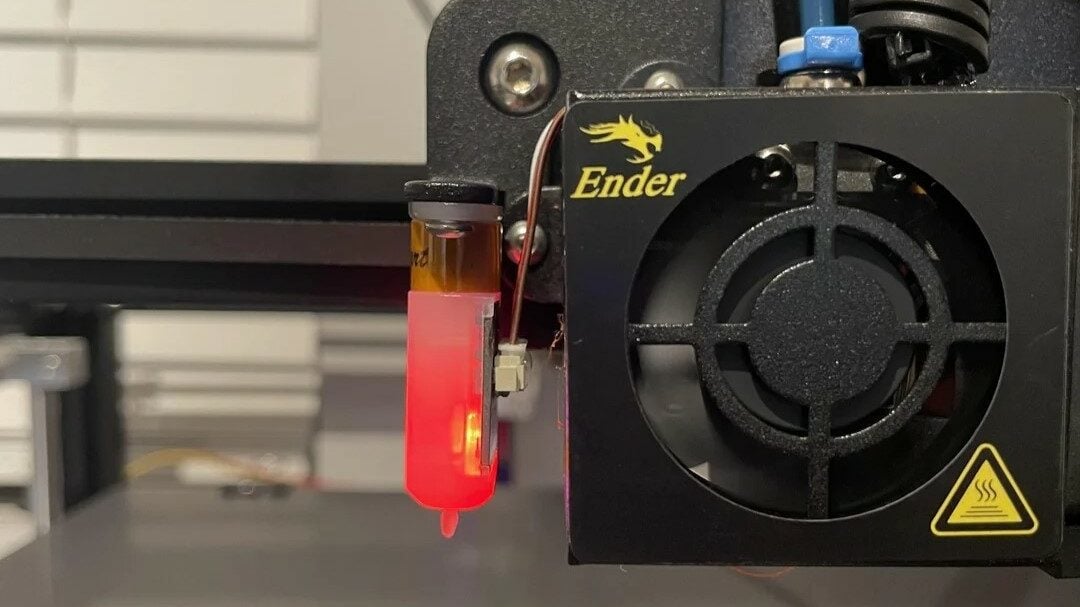
One of the most popular ABL sensors on the market today is the Antclabs BLTouch, which works on many FDM 3D printers, including the Ender 3 (V2/Pro). The BLTouch utilizes a physical push-pin that detects when it comes in contact with the build platform. In conjunction with an in-built Hall sensor, the device then signals to the printhead that it’s reached the lowest point, which provides pretty accurate measurements.
Installing the hardware on your Ender 3 (V2/Pro) is pretty simple as it plugs into two existing ports on the newer Creality mainboards (on the V2) or an attachable “pin 29” board on the older Ender 3 versions (original and Pro).
To flash new firmware to your Ender 3’s mainboard, you’ll either have to use a USB-to-ISP connection or the mainboard’s MicroSD card slot (for newer Creality boards). If you have trouble with installation, given the BLTouch’s popularity, there are many instructional videos online.
- Manufacturer: Antclabs
- How it works: Mechanical (push-pin) and Hall sensor
- Ease of setup: Suitable for beginners
- Cost: ~$50
CR Touch
The CR Touch is Creality’s self-developed ABL sensor that works on the Ender 3 (V2/Pro). On top of having a similar name to the BLTouch, the CR Touch is housed in a familiar structure and works the same way, using a Hall effect sensor with a retractable pin.
One of the best parts of the CR Touch is that it’s super easy to install on the Ender 3 (V2/Pro), which makes sense as the option from Creality. The CR Touch can plug into one 5-pin port on newer Creality mainboards (e.g. V4.2.2), and the kit comes with a choice of mounts, including one suitable for the Ender 3 models. The position of the bed leveling sequence can be adjusted in your printer’s firmware or by sending specific G-code commands to your printer’s motherboard.
Overall, the CR Touch is an excellent choice for those with a newer Creality mainboard on their Ender 3, Pro, or V2 who want a quick and easy install.
- Manufacturer: Creality
- How it works: Mechanical (push-pin) and Hall sensor
- Ease of setup: Suitable for beginners
- Cost: ~$40
EZABL Pro

TH3D develops 3D printing kits that are easy to use, thoroughly documented, and well-supported. One such kit is the EZABL Pro, which, unlike the BLTouch, uses a custom capacitive sensor. As a capacitive sensor, the EZABL Pro can detect nearby objects (in this case, the build plate) without contact; it can also work on any type of build surface, including glass and metal.
The EZABL Pro has some additional features to preserve precision and accuracy, such as zero temperature drift, electrical isolation from the mainboard, and a pre-made TH3D Unified Firmware package. The EZABL Pro is also compatible with most printers that run open-source firmware (Marlin, Klipper, RepRap, etc.).
Installing the EZABL Pro may be slightly more complicated than some of the other options on this list, as the sensor has a few extra components. You’ll also need to buy or create your own mount to attach the sensor to the printhead. However, if you’re a serious 3D printing enthusiast who doesn’t mind paying a few extra bucks for a long-lasting upgrade, this may be the one for you.
- Manufacturer: TH3D
- How it works: Custom capacitive sensor
- Ease of setup: For experienced users
- Cost: ~$65
Taiss Capacitance Proximity Sensor
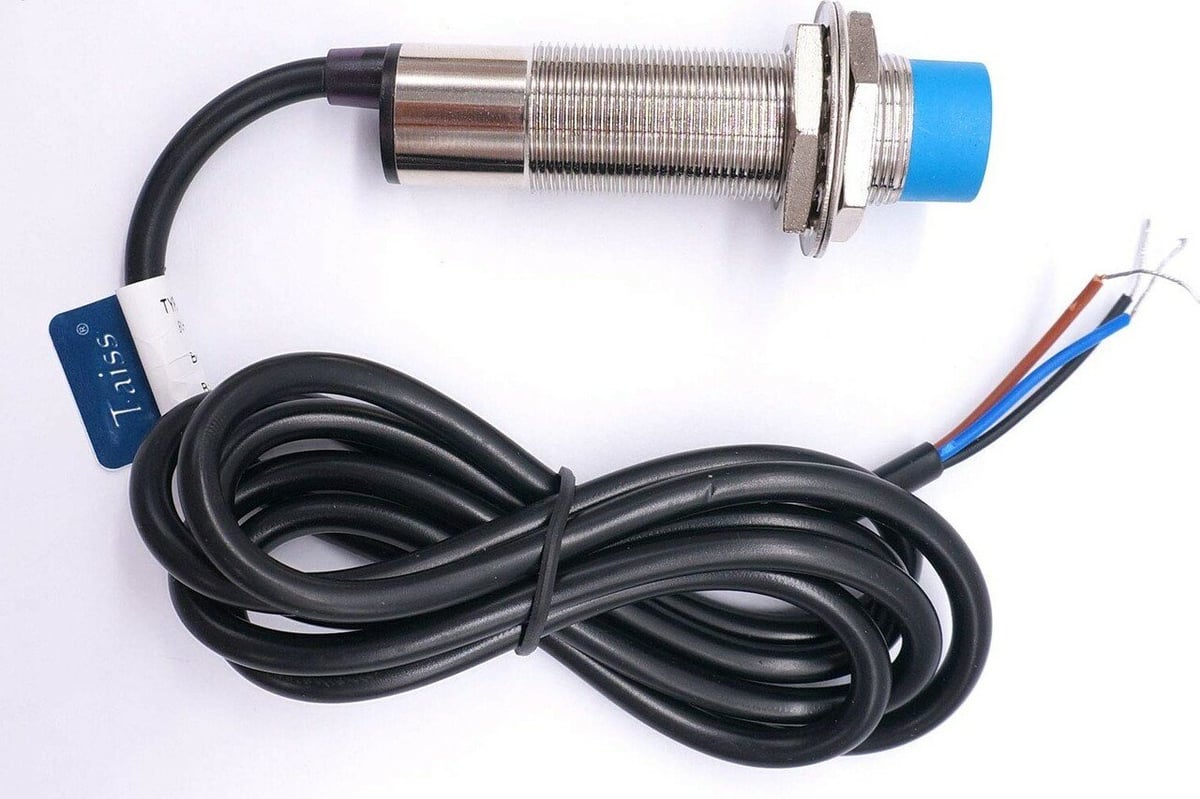
Next, the Taiss Capacitive Proximity Sensor, specifically model LJC18A3-H-Z, is another excellent ABL sensor that can be used on the Ender 3 (V2/Pro). The Taiss LJC18A3 is a capacitive sensor, similar to the EZABL Pro sensor, so it measures the bed distance without contact by detecting disturbances in an electrical field. As such, this sensor can be used to level a variety of different beds, including glass, metal, and even plastic.
This sensor offers a relatively good accuracy of 0.001-0.01 mm, especially considering the product’s sub-$15 price tag. Unfortunately, the manufacturer states that this sensor has an operating temperature between -25 and 65 °C. This means the bed leveling might not be super accurate when printing high-temperature materials like ABS or PC, where temperatures above 65 °C are required.
As for installing this sensor on the Ender 3, the process is not too different from how you would install an off-the-shelf inductive sensor. You’ll need a special hot end mount to fit the sensor to your Ender 3’s printhead (this can be 3D printed). Additionally, the sensor will need to be wired to a designated port on your motherboard, and some firmware adjustments are necessary.
- Manufacturer: Taiss
- How it works: Capacitive sensor
- Ease of setup: For experienced users
- Cost: ~$11
SuperPINDA
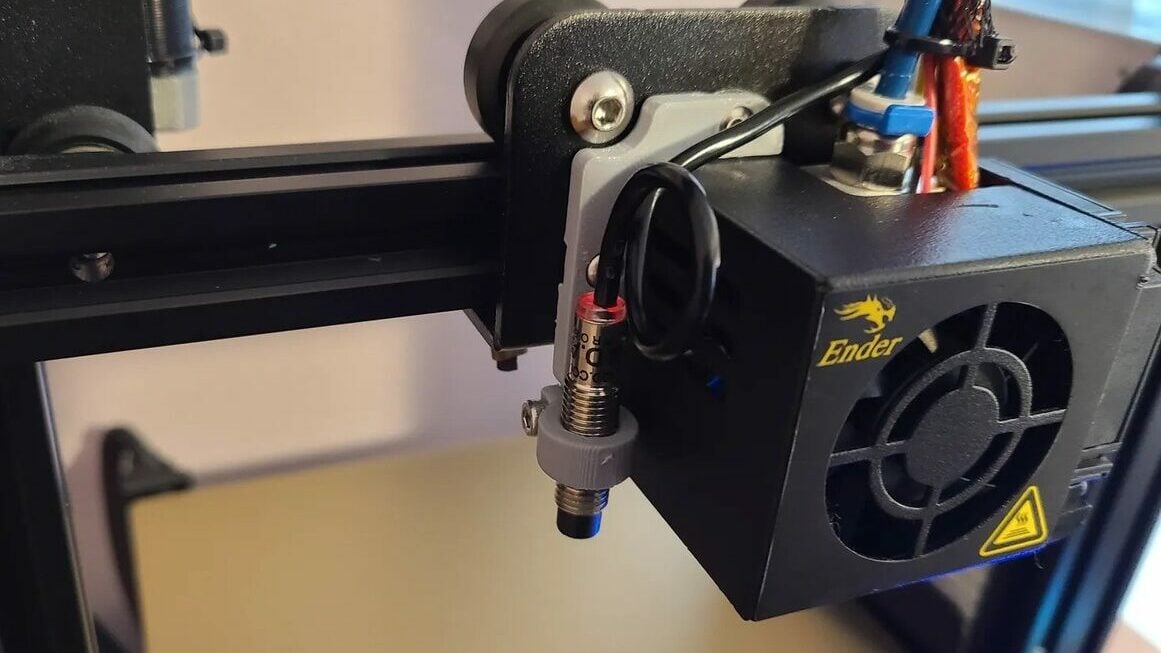
Prusa Research is known for making high-quality products, whether it’s filaments or 3D printers, and their SuperPINDA sensor is no exception. The SuperPINDA is an inductive automatic bed leveling sensor developed by Prusa themselves as an upgraded version of their PINDA V2 ABL sensor. Unlike the PINDA V2, the SuperPINDA offers temperature independence, allowing for more consistent bed leveling no matter if the build plate is hot or cold.
Additionally, as an inductive sensor, it’s worth pointing out that the SuperPINDA works best with metal beds because this sensor technology relies on magnetic fields to determine bed distance. While users have tested this sensor to work on non-metal beds (e.g. glass, polypropylene), it’s not recommended.
The SuperPINDA comes stock on the Prusa i3 MK3S+ but can be purchased separately and fitted to a variety of different machines, including the Creality Ender 3 (V2/Pro), using 3D printed mounts. Besides that, you’ll need a motherboard with a designated ABL sensor port, such as many MKS and SKR boards. You’ll also have to adjust the firmware to support the new sensor. Check out this guide to learn more about adding a SuperPINDA sensor to an Ender 3!
- Manufacturer: Prusa Research
- How it works: Inductive sensor
- Ease of setup: For experienced users
- Cost: ~$26
Off-the-Shelf Inductive Sensor
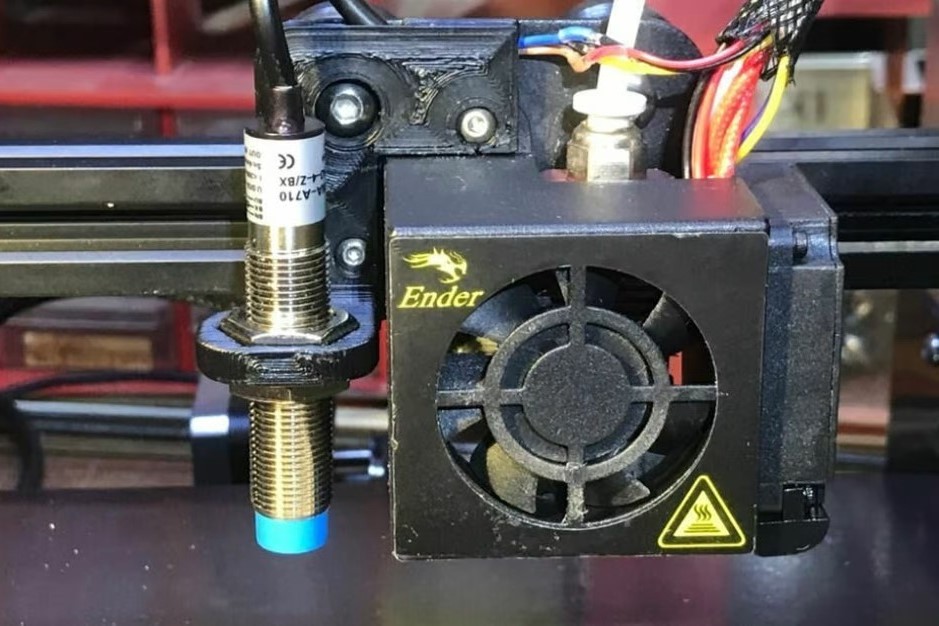
Lastly, you can use a generic, off-the-shelf inductive sensor as a bed leveling device on your Ender 3. There are many options for inductive sensors online, and most cost between $10 and $15, making them much less expensive than other options like a BLTouch. Most of these sensors, even the lower-cost options, are very accurate and reliable, which is another benefit.
Like capacitive sensors, inductive sensors are contactless, but they work differently. Inductive sensors work by detecting magnetic fields (it’s a contactless way to detect only metals), so you should only consider this option if you have a metal build plate.
As you might expect, installing an off-the-shelf inductive sensor on your Ender 3 (V2/Pro) will be a bit more challenging than installing some of the other options on this list, like a BLTouch or EZABL Pro. You’ll likely have to 3D print a mounting bracket and manually adjust your printer’s firmware to support the inductive sensor. For more instructions, you can follow one user’s guide to installing this type of device on an Ender 3.
- Manufacturer: Various
- How it works: Inductive sensor
- Ease of setup: For experienced users
- Cost: $10-15
Euclid Probe
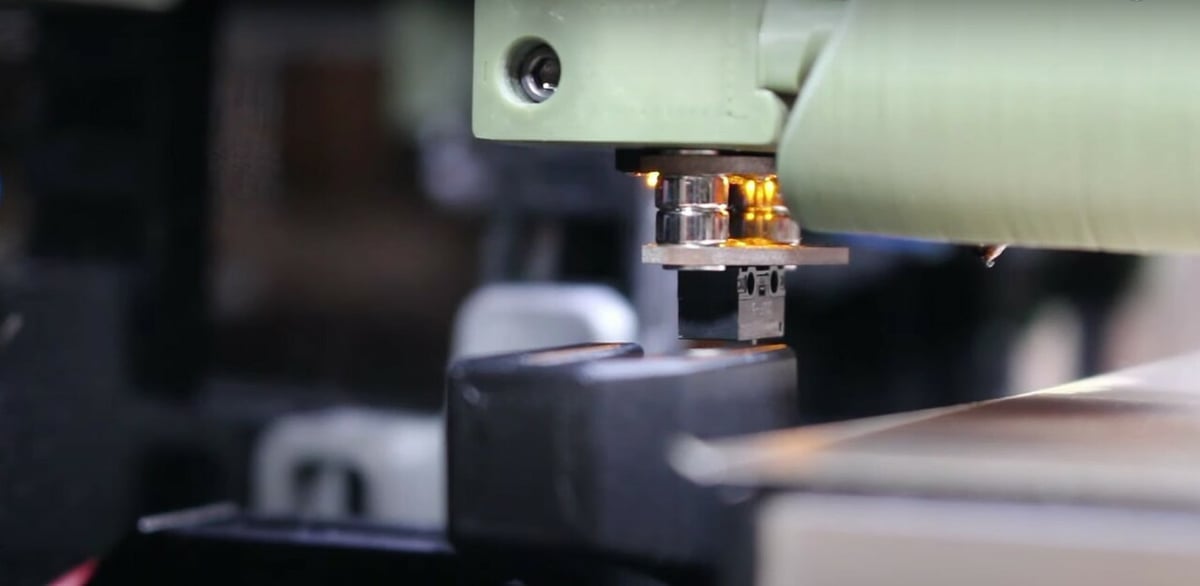
The Euclid Probe is a partially-DIY ABL sensor that uses a microswitch and a special probe to make bed leveling measurements. While not in use, the probe sits in a holder near the print bed and the microswitch is attached to the print head. To make measurements, the microswitch uses magnets to pick the probe off its holder and move it around the build plate. Once complete, the print head moves to drop off the probe.
The benefits of this probe include impressive repeatability and a high operating temperature (up to 140 °C for some versions).
Compared to the other ABL sensors covered in this list, the Euclid Probe is notably different, both in functionality and in the setup process. It’s also not nearly as popular. However, if you’re looking for a challenge or fun DIY project on your 3D printer, then this option is right up your alley. You can follow the tips and instructions on Euclid’s website to learn more about fitting this sensor to your Ender 3.
- Manufacturer: Euclid
- How it works: Microswitch
- Ease of setup: For experienced users
- Cost: ~$25
BFPTouch
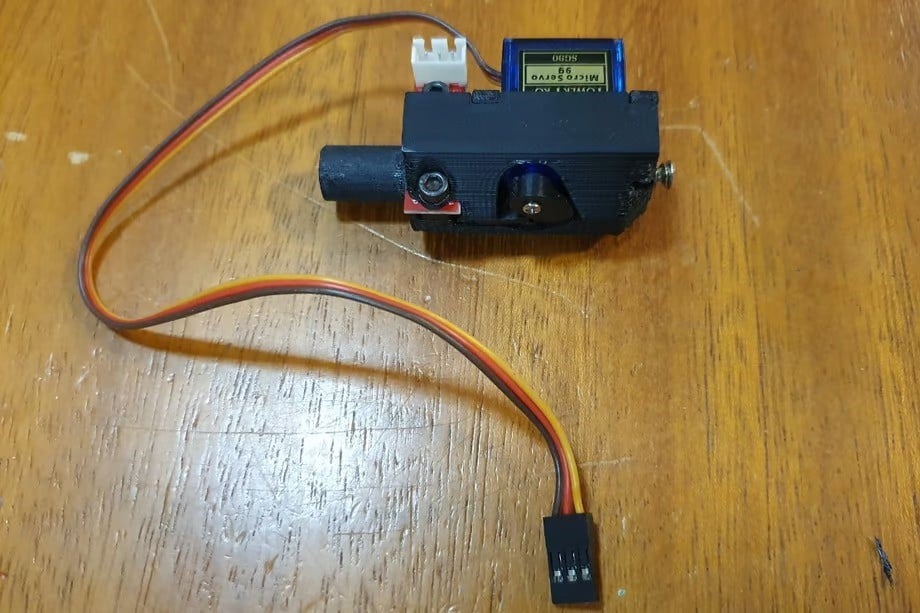
As mentioned, the BLTouch is the most popular ABL sensor out there. Still, it’s not exactly a super durable product, with some users reporting broken probing pins or faulty electronics. The BFPTouch, dubbed the “poor man’s BLTouch”, is a DIY version of the BLTouch that uses 3D printed components, a servo, an optical endstop, and a few other components.
The difference between the two sensors is that the BFPTouch is easier to troubleshoot when something goes wrong because you can replace individual components rather than having to replace the entire sensor. The creator of the project claims that the device is even more accurate and reliable than other sensors in its price range.
Installing the BFPTouch onto the Ender 3 (V2/Pro) is definitely more difficult than installing other sensors, but if you’re looking for an open-source ABL sensor, it may just be worth it. The designer has provided detailed instructions on the project page for setting up the device on a generic printer, and other users have provided Ender 3-specific instructions.
- Creator: brunofporto
- How it works: Optical endstop with servo
- Ease of setup: For experienced users
- Cost: ~$25 (depending on what parts you have handy)
License: The text of "Ender 3 (V2/Pro) Auto-Bed Leveling: The Best Options" by All3DP is licensed under a Creative Commons Attribution 4.0 International License.
CERTAIN CONTENT THAT APPEARS ON THIS SITE COMES FROM AMAZON. THIS CONTENT IS PROVIDED ‘AS IS’ AND IS SUBJECT TO CHANGE OR REMOVAL AT ANY TIME.

